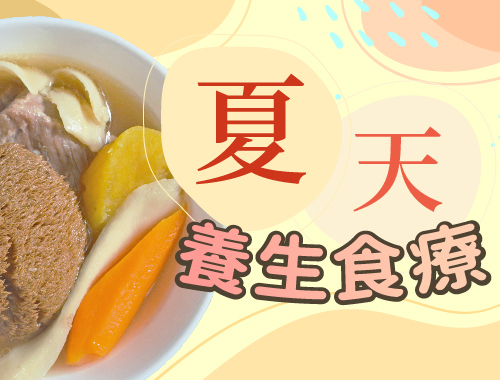HANOI, VIETNAM - Media OutReach Newswire - 30 July 2024 - Viet Nam and India have considerable agricultural development, with similar agricultural, forestry and fishery export figures, over US$50 billion annually. However, agricultural trade between the two nations remains low, achieving less than US$2 billion annually, indicating ample growth space. The state visit of the Vietnamese Prime Minister to India from July 30 to August 1, 2024 at the invitation of Prime Minister of India, is expected to boost bilateral relations, especially in agricultural cooperation and trade.
Ample space for agricultural trade development
The traditional friendship between Viet Nam and India has deep historical roots, originating from historical connections and cultural along with religious and commercial exchanges. Over the years, despite the geographical distance, the interactions and exchanges between the people of the two countries have always been maintained. India is one of the seven countries establishing a comprehensive strategic partnership with Viet Nam.
India and Viet Nam are countries with strengths in agriculture. In 2023, the export turnover of agricultural, forestry and fishery products of the two countries is equivalent. India's agricultural exports reached US$53.1 billion. India is a leading global producer of dairy, pulses and millet; and the second-largest producer of fish, rice, wheat, fruits and vegetables.
Agricultural products and processed food play a crucial role in India's economy, ensuring national food security. India is also now expanding the production of these products for export orientation.
Meanwhile, Viet Nam's agricultural, forestry and fishery exports in 2023 exceeded US$53 billion, with numerous key products meeting high-quality standards, including VietGAP and GlobalGAP. Viet Nam excels in exporting fruits, including dragon fruit, longan, mango, pomelo, rambutan, mangosteen, durian, star apple and lychee.
Given the traditional diplomatic relations, population scale and socioeconomic development speed, there is still plenty of room for growth of agricultural trade between Viet Nam and India.
In 2023, Viet Nam's agricultural exports to India were modest at US$507 million, accounting for nearly 1.5 per cent of India's total agricultural imports. Viet Nam exports diverse agricultural products to India, including coffee, tea, pepper, cashew nuts, cinnamon, star anise, cardamom, rubber, confectionery products, tra fish (pangasius), basa fish and cereal products.
Conversely, Viet Nam imported US$1.48 billion worth of products from India. The main agricultural, forestry and fishery products imported from India include livestock feed and materials (US$501.3 million), corn (US$376.3 million), seafood (US$333.5 million), cotton (US$95.7 million), pesticides and materials (US$86.4 million), and fruits and vegetables (US$69.6 million).
With a population of over 1.4 billion, a rapidly growing economy and the highest percentage of vegetarians in the world (38 per cent), India is one of the world's largest agricultural consumption markets, with significant potential for growth.
Opening up agricultural markets
Viet Nam has proposed that both countries open their markets for fruits and vegetables and sign bilateral trade agreements to facilitate agricultural trade.
Viet Nam has requested India to consider opening its market to Vietnamese pomelos and to send pest risk analysis (PRA) reports for fresh fruits, including longan, rambutan and durian. The Vietnamese Ministry of Agriculture and Rural Development (MARD) has provided technical information on cashew nut shells and kernels to India and is preparing information on dried cinnamon leaves and annatto seeds to send soon.
Furthermore, the connection between the two countries' businesses, promoting trade and investment in agriculture, forestry and fisheries, still has ample room.
Future agricultural cooperation
According to Nguyen Do Anh Tuan, head of the International Cooperation Department under the Ministry of Agriculture and Rural Development (MARD), in the future, the two countries still have ample room to strengthen cooperation in several areas.
These include enhancing cooperation in trade, investment, science and technology and agricultural training for mutual benefit, promoting the best advantages of each side, particularly in terms of India's population size and agricultural science and technology foundation, and Viet Nam's ability to connect to the global market. Both countries should develop sustainable agriculture, address climate change and contribute to global food and nutrition security.
Furthermore, increasing cooperation is required to facilitate the trade of agricultural, forestry and fishery products, as well as to remove trade barriers and bottlenecks between the two countries.
Additionally, continuing to strengthen cooperation in various agricultural fields, prioritising biotechnology, horticulture, post-harvest technology and agricultural mechanisation, will be beneficial.
The two countries should promote market opening for two products, grape and pomegranate from India, as well as grapefruit and durian from Viet Nam. Both also should continue to exchange information and share techniques and experiences in aquaculture, including shrimp farming and pearl cultivation.
Nguyen Do Anh Tuan indicated that Viet Nam wanted India to consider and soon grant import permits for Vietnamese fruits, including pomelo, mango, lychee, longan, rambutan, durian, watermelon and passion fruit.
Hashtag: #agricultural
發佈者對本公告的內容承擔全部責任
source: Rich Media
《說說心理話》【奧運劍擊熱】大師兄張小倫親身分享!贏在起跑線=壓力?如何培育子女有卓越成就?► 即睇































